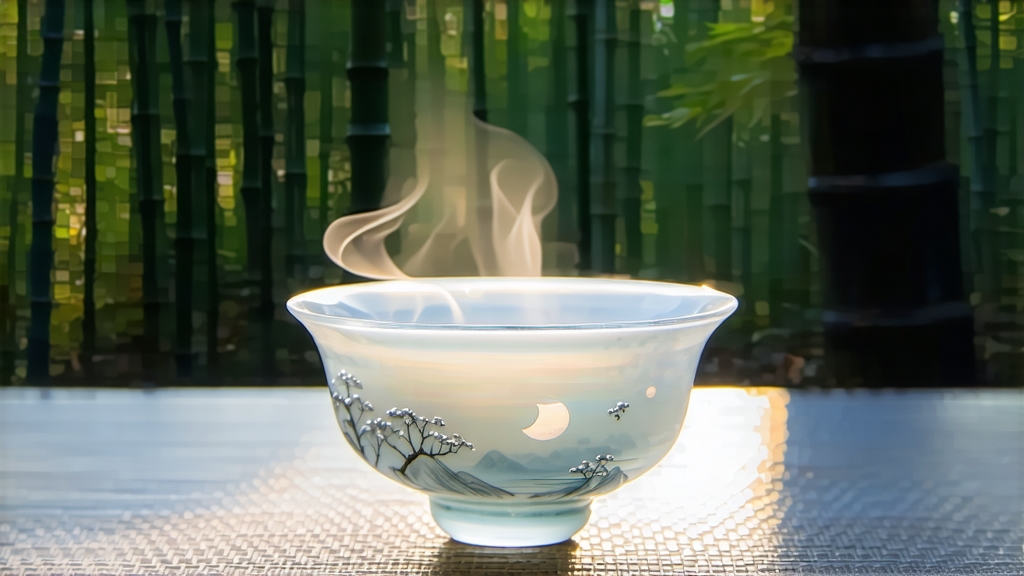
When most tea lovers picture Chinese white tea, the image that drifts into mind is almost always the same: slender, silvery buds that look as if they were dipped in moonlight. That vision is Bai Hao Yin Zhen—literally “White Hair Silver Needle”—the most prestigious cultivar within the white tea family. Revered for its downy appearance, feather-light touch, and a flavor so delicate it seems to evaporate on the tongue, Silver Needle is both an entry point and a lifelong pursuit for those who seek clarity in a cup. Yet behind its ethereal façade lies a tightly choreographed story of geography, season, craftsmanship, and time—one that begins in the mist-laden hills of Fujian and ends, if you are patient, in a moment of quiet revelation.
-
Historical whispers
White tea is the oldest of the six major Chinese tea categories, and Silver Needle is its aristocratic ancestor. The first written record appears in the Song Dynasty treatise “Da Guan Cha Lun” (1107 CE), where Emperor Huizong describes a tribute tea “covered in white down, picked at dawn when the dew is still cool.” Modern historians believe that reference points to an early prototype of Yin Zhen picked from wild tea trees in northern Fujian. During the Qing Dynasty, the imperial court formalized Silver Needle as one of the “Ten Famous Tributes,” dispatching horse caravans from Fuding county to Beijing each spring. Legends abound: palace ladies supposedly steeped the buds in well water drawn at the stroke of midnight, believing the tea preserved youth; scholars brewed it while composing poetry, claiming it clarified the mind better than ink. Whether myth or marketing, the aura of rarity has never left Silver Needle; even today, less than 0.3 % of China’s total tea output qualifies as authentic Bai Hao Yin Zhen. -
Terroir: two counties, two personalities
Authentic Silver Needle hails exclusively from two micro-regions on Fujian’s eastern coast—Fuding and Zhenghe—separated by only a hundred kilometers yet distinguished by subtle but decisive differences in soil, elevation, and humidity.
- Fuding: granitic, fast-draining soils, lower altitude (300–500 m), and maritime breezes produce buds that are plump, silver-white, and high in amino acids. The cup is famously soft, with a melon-sweet finish and a cool, minty “tingle” on the edges of the tongue.
- Zhenghe: volcanic loam, higher elevation (600–800 m), and thicker cloud cover yield buds that are slightly slimmer and more grey-green. The tea develops deeper, orchard-fruit notes—ripe pear and baked apple—under a creamier texture.
Purists will happily feud over which county reigns supreme, yet both enjoy Protected Designation of Origin status under China’s agricultural GI system, a guarantee that every needle was plucked within the historic core.
- The art of “no-action” craftsmanship
White tea’s minimalist processing—merely withering and drying—means there is nowhere to hide flaws. Great Silver Needle is made in the picking, not in the factory.
a) Plucking window: only the unopened bud, known in Chinese as “single flag,” is taken, ideally on a dry morning between mid-March and early April when ambient humidity hovers around 65 %. Each kilo of finished tea requires roughly 30,000 buds, all plucked by thumbnail to avoid the bruising that scissors can cause.
b) Outdoor withering: the buds are laid in single layers on bamboo trays and left under shade cloth for 24–36 hours. Master tea makers gauge progress by touch—when the bud’s spine bends without snapping, moisture has fallen from 75 % to roughly 20 %.
c) Indoor resting: trays are moved into a ventilated loft where cooler, slower withering continues for another 12 hours. Enzymatic oxidation is allowed to creep along at 2–3 %, just enough to convert grassy aldehydes into floral alcohols, but not so much that the tea tips into yellow or oolong territory.
d) Low-heat baking: finally, the buds are charcoal-baked for 15 minutes at 40 °C, a step that halts oxidation while preserving the protective down. The goal is “kill green without killing scent,” a paradox that demands perfect timing.
Unlike green tea, Silver Needle is not meant for